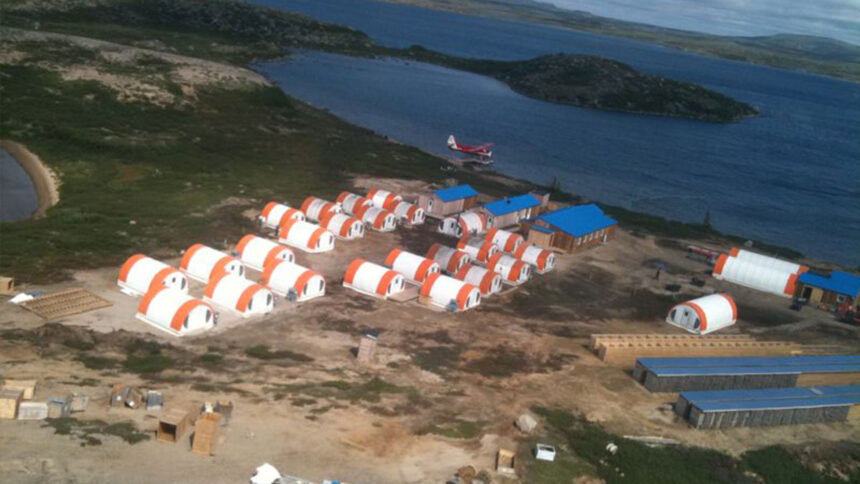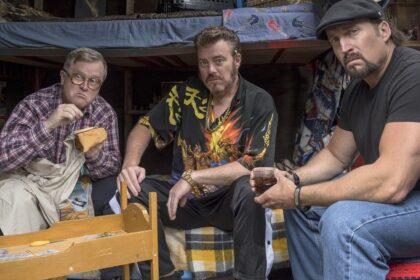Jim Goudie was surprised when he heard Canada’s energy minister name-drop the Strange Lake mine at the G7 summit in Toronto. “We knew there was dialogue happening in Ottawa and with the province of Quebec and with the proponent of the project,” said Goudie, deputy minister of Land and Natural Resources for the Nunatsiavut Government. “But it took us somewhat off guard that, you know, the energy minister was talking about this project at the G7—as well as some of the statements made by the prime minister.” The proposed rare earths mine sits in northern Quebec near the Labrador border. For the most part, it is on Innu land and is currently in the advanced development stage, focusing on design, engineering, and the environmental assessment process. It is not yet in operation or construction. But the road that would be used to access the site cuts through lands managed by the Nunatsiavut government, raising concerns over consultation, environmental review, and the fragile state of the George River Caribou herd. “The proposed project includes a road that’s over 100 kilometres long from the Quebec border to the Labrador Sea, which crosses through the Labrador settlement area,” Goudie explained. “It crosses not only very closely to some of our Atlantic salmon and char rivers, it crosses the migration route of the George River Caribou herd, which is undergoing, you know, the largest ungulate crash in North American history.” That herd used to recover every 70 years. But this time, Goudie said, things are different. “We’re super predators now, as humans. There’s no place to hide. We have snowmobiles, high-powered rifles, GPS, computer equipment… In the past, they’ve been able to kind of recede from human contact and regrow the herd. But in this case, we’re not seeing that quick rebound that happened in the past.” The Nunatsiavut Government, together with the governments of Newfoundland and Labrador and Quebec, conducted an aerial survey of the George River Caribou herd in July 2024. Results from that census show the herd remains critically low, with an estimated 8,600 animals—just one per cent of its historical peak of 860,000 animals. Goudie says it is the worst crash since the 1950s. The science is not on how the road will impact the herd. They are different from herds elsewhere in Canada because they have never known a road. Not briefed The Strange Lake project was included in a federal announcement at the G7 when the federal government highlighted 26 new investments to unlock $6.4 billion in critical mineral development. The move is part of a broader push by Prime Minister Mark Carney to position Canada as a stable, democratic alternative to China, which currently dominates the global supply and refining of critical minerals. But Goudie said no one from the federal government consulted him or briefed his office. “I haven’t had any conversations with the federal government. My minister hasn’t had any conversations. My president hasn’t had any conversations with the federal government on this project yet,” Goudie said. “It’s a major development. The mine might not be on our site—but the road definitely is.” There have been meetings of technicians, he said, but there was no warning that the project would be announced with such confidence at an international meeting, before consultations are complete. That road could also open the door to something else. While the mine being advanced sits in Quebec, Goudie said a larger, higher-grade deposit lies just across the border, on Nunatsiavut Inuit land. “We took the opportunity to select that area as Labrador lands—lands that we would have a definite say in, lands where we would also get a portion of the subsurface mineral monetary value.” It seems likely that once the infrastructure is in place on the Quebec side that eyes will turn to the deposit on Inuit land. The Inuit, he said, are not against development, but the Carney government and the processes laid out under the controversial Bill C-5, or One Canadian Economy law, have not passed a first test yet. “ The prime minister has promised us that all land claims will be front and centre, and no way any of these nation-building projects will infringe on that. But we haven’t had one yet,” said Goudie. For now, he’s watching closely. Read More: Carney’s critical minerals push meets Indigenous realities as Canada races to rival China’s supply dominance Inuit leaders present nation-building plan in ‘One Economy’ meeting with Carney ‘Hair on the back of my neck is standing up’ The timing of the Strange Lake push follows a summer of frustration for Indigenous leaders, who say they weren’t properly consulted on the major projects law, which also gives the federal Cabinet new powers to fast-track “national interest” projects. Under the law, ministers can exempt such projects from parts of the Impact Assessment Act and override certain regulatory steps. The government said Canada can’t afford to wait. The average mine takes 18 to 20 years to become operational. With global demand soaring for minerals used in electric vehicles, smartphones, wind turbines, and missile systems, Carney has made critical minerals central to his economic and trade policy. In June 2025, G7 leaders met in Kananaskis, Alta., and launched a new plan to boost global access to critical minerals and a partnership called the Critical Minerals Production Alliance. It aims to make the global mineral supply more reliable and less dependent on countries like China. Then, in October 2025, during a G7 meeting in Toronto, Canada’s Energy Minister Tim Hodgson announced the first wave of projects under this alliance. The federal government is backing 26 new investments and partnerships, worth up to $6.4 billion, to speed up the development of critical minerals. The first ones included Torngat Metals – Strange Lake project and a collaboration with Carester (France) for rare earth element production and processing. Others included: Nouveau Monde Graphite – Matawinie Mine, near Montreal, and offtake agreements with Panasonic (Japan), Traxys (Luxembourg). The Rio Tinto – Scandium Production Plant in Sorel-Tracy, Que. Ucore Rare Metals Inc. – Rare Earth Processing Facility in Kingston, Ont., got injections of cash from Canada. The Vianode – Synthetic Graphite Facility St. Thomas, Ont., Northern Graphite – Lac des Iles Project near Montreal got promises of investment, export credit guarantees and other agreements from other countries such as Germany, Italy and France. But Goudie said the federal government is getting ahead of itself on Strange Lake, making it sound like a done deal. “It’s just a bit concerning to kind of hear this from a federal side note. It almost gives the impression that this project is a go. And I don’t think they’re anywhere near that yet.” He said the Nunatsiavut government needs to see clear benefits to Inuit in this and future agreements. “I think that Indigenous groups throughout Canada need to be the primary benefactor of large-scale industrial projects that are happening within their regions. And up to this point, I haven’t seen anything that I could brief my minister on—why we would take all the risk.” Goudie doesn’t rule out future participation. He points to the Voisey’s Bay nickel mine, one of the largest in the world, as an example of what’s possible when agreements are done right. “We signed an impact benefit agreement… arguably those are the best impact benefit agreements by Indigenous groups not only in Canada, but in the world.” On November 13, Prime Minister Mark Carney made a second round of announcements detailing major infrastructure and resource projects that will be fast-tracked through the federal Major Projects Office (MPO). The new tranche of projects did not include the Strange Lake rare-earth mine but a handful of the announced projects explicitly named Indigenous proponents or communities. The new projects referred to the MPO include: Ksi Lisims LNG – LNG facility led by the Nisga’a Nation Iqaluit Nukkiksautiit Hydro Project – First 100% Inuit-owned hydro development Northwest Critical Conservation Corridor – Clean power, infrastructure, and protected areas North Coast Transmission Line – Supports LNG and mining in B.C.’s Golden Triangle Canada Nickel’s Crawford Project – Low-carbon nickel mine in Ontario Nouveau Monde Graphite’s Matawinie Mine – Battery-grade graphite project in Québec Northcliff Resources’ Sisson Mine – Tungsten development in New Brunswick Carney also mentioned Ontario’s ring of Fire, a project that involved a number of First Nations from Treaty 9 in northern Ontario, but not all of them have signed on, notably Neskantaga First Nation has remained opposed. Carney did not say the Ring of Fire would be part of the Major Projects list but instead said the “Ring of Fire alone has the potential to add over $22 billion to Canada’s GDP over 30 years” and “the federal government is committed that these opportunities are realized in full partnership, including equity ownership, with First Nation communities.” Continue Reading
Nunatsiavut govt surprised by G7 announcement on Strange Lake mine

Leave a Comment











